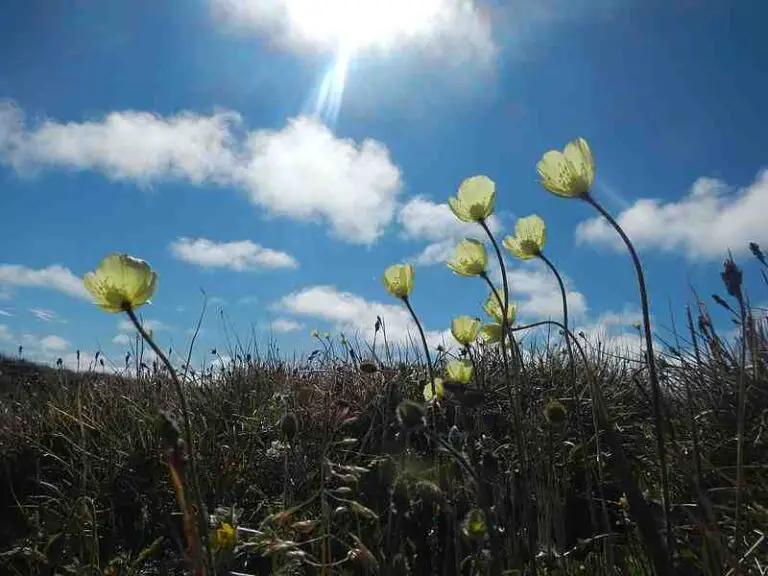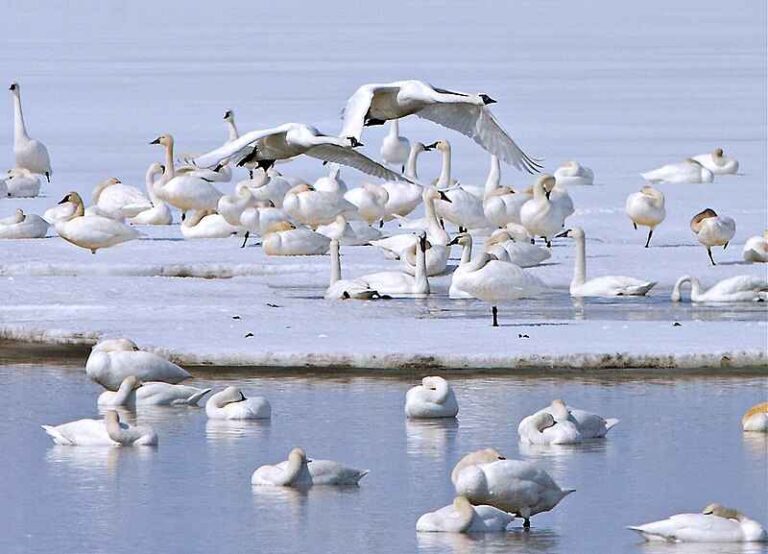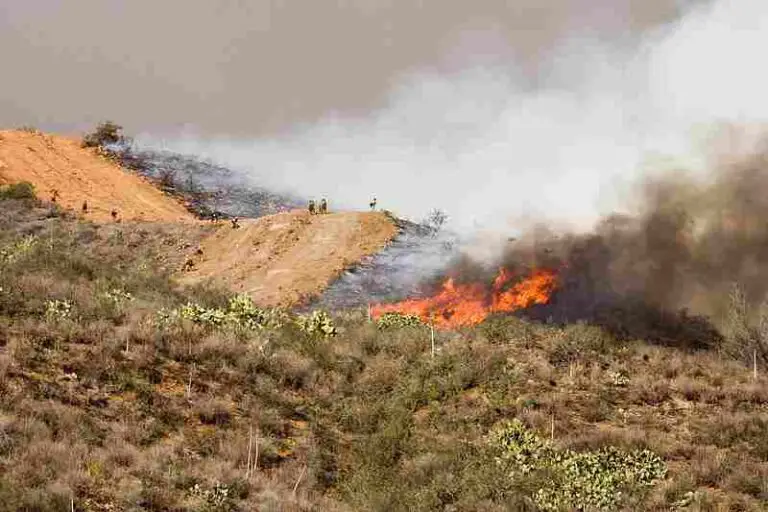Deforestation Meaning, Importance and Effects Explained
Deforestation is the large-scale removal of trees, mostly by humans, and its effects include global warming, climate change, acidification, wildlife extinction, erosion and flooding. This article discusses deforestation meaning, importance and effects;
-What is Deforestation? Deforestation Meaning
-Deforestation and the Importance of Forests
-Environmental Effects of Deforestation
-Social Effects of Deforestation
-Economic Effects of Deforestation
What is Deforestation? Deforestation Meaning
Deforestation is the loss of forests.
This ‘loss’ usually involves the removal or clearing of trees and wooded land areas.
There are various reasons for which deforestation occurs. Although there are rare cases where deforestation occurs as a result of natural processes like desert encroachment, human activities play a major role in the occurrence of deforestation.
When deforestation occurs, the land which was formerly occupied by forest, is usually put to other uses. Examples of these uses include urban regional development, industrial practices, agriculture, and mineral exploitation [19].
Deforestation can also be defined as the purposeful decrease in size of forest areas.
There are some factors which should be considered when defining deforestation. One of these is the fact that it is usually a purposeful process.
As earlier stated, deforestation often occurs in a bid for the human population to gain more land which can be used for various alternative purposes.
Population growth can be said to play a role in deforestation, as it leads to increase in the demand for natural resources such as land.
It is important to note that deforestation is a form of resource-depletion. Forests around the world harbor various natural resources like plant biomass and wildlife. The occurrence of deforestation leads to the loss of these resources.
Deforestation may also be seen as a form of environmental degradation. This is because forests serve as carbon sinks [8], and contribute to environmental preservation and sustainability, in various ways. The removal of these forests therefore (which is what happens with deforestation), strips the environment of such benefits.
Deforestation and the Importance of Forests
Forests represent a major part of the global ecosystem.
In addition to environmental preservation, the presence of forests contributes immensely to the physicochemical balance of the Earth.
With the rising awareness of the importance of sustainable development, several studies and efforts have been made to evaluate as well as control deforestation.
Deforestation rates are said to have increased drastically since the mid twentieth century. This is facilitated by industrialization, agriculture and urbanization among other factors.
Environmental, ecological and climatic impacts of deforestation have also increased.
There are several important roles played by forests in our global ecosystem. To begin with, these forests occupy over 30 percent of the overall land area on Earth, and are occupied by about 80 percent of terrestrial biodiversity [18].
By absorbing carbon dioxide and producing oxygen, forests serve as a natural carbon sink for environmental purification, thereby mitigating climate change, greenhouse effect and global warming.
Forests are also relevant as a source of food, medicinal and industrial raw materials, and energy for the human population.
Globally, millions of jobs have been created in the field of forestry and its related sectors.
There are some natural hazards which are partly controlled by forests. These include flooding and erosion. Forest soils and vegetation often act as reservoirs for excess precipitation which could cause erosion and flooding.
Erosion is reduced by forests because the vegetation provides structural support to the soil [7]. This reduces the risk and rate of land degradation and loss.
With regards to the water cycle, forests are a major facilitator for the natural processes that ensure that water is recycled on Earth. One of such processes is transpiration, which releases water vapor into the atmosphere.
Three industries which benefit from the existence of forests are the textile, timber and paper industries. A significant portion of the world’s bioenergy is also sourced from forests.
Humans benefit directly from forests. It is estimated that about three hundred million people live in forest areas, while at least 1.6 billion people (up to 1/7th of the entire human population) live within the environs of forests or rely directly on forests for their livelihood [11].
These people depend directly or indirectly on forests for their livelihood. Forests may serve as centers of tourism and attraction. Several undiscovered animal and plant species are believed to inhabit forests as well.
As a natural resource, forests are known to have immense economic, social and environmental value. The current rate of deforestation poses a risk to the existence of forests.
In the 1990s, deforestation was estimated to occur at a rate of 16 million hectares per year, and this decreased to about 10 million hectares per year, from 2015 to 2020 [10].
At least 568 million acres of forest land is estimated to have been lost between 2015 and 2020, globally. This loss is said to have been driven primarily by agricultural development, with the vegetation in many of these forest lands being actively replaced by agricultural crops like oil palm [14].
Aside large-scale commercial agriculture, lands which were formerly occupied by forests are being used for local subsistence farming. Livestock agriculture is another prominent agricultural use of former forest lands.
Currently, it is believed that the rate of deforestation is highest in tropical rainforests.
The causes of this deforestation include urbanization (which comprises of road/building construction) and agricultural expansion.
At least 10 percent of the world’s tropical forest is estimated to have been lost since the year 2000 [6]. This includes up to 9 million acres of tropical rainforest that was lost to deforestation in 2018.
Effects of Deforestation
The effects of deforestation include;
1. Greenhouse Emission
2. Climate Change
3. Water Cycle Disruption
4. Flooding and Erosion
5. Habitat Loss
6. Biodiversity Loss
7. Food Insecurity
8. Health Decline
9. Low Quality of Life
10. Economic Recession
These effects are discussed in three main categories; environmental, social and economic, as follows;
Environmental Effects of Deforestation
1). Greenhouse Emission
It is widely known that the burning of fossil fuels is one of the main causes of greenhouse emissions.
Another cause of greenhouse emissions however, is deforestation.
It is estimated that deforestation accounts for approximately 30 percent of greenhouse emissions annually, almost equivalent to the contribution of the transport sector.
There are two major ways by which deforestation contributes to greenhouse emission.
Firstly, deforestation leads to the loss of (and deficiency of) trees. Trees (and in fact all types of vegetation) act as carbon sinks, because they consume carbon dioxide; a greenhouse gas that would otherwise be released into the atmosphere. In return, these trees release oxygen, a very useful gas, into the atmosphere.
The absence of trees which is caused by deforestation, increases greenhouse emissions directly, by reducing the size of the global carbon sink, which is provided by vegetation, and which helps to reduce atmospheric carbon.
Secondly, deforestation leads to the decay of trees.
One of the major products of the decomposition of plant biomass is greenhouse gases like carbon dioxide, nitrogen dioxide, sulfur dioxide and methane.
Particularly, carbon dioxide.is produced on large quantities when trees decay. This is because the trees store large amounts of carbon dioxide during their lifetime [16].
The same occurs when plant biomass is decomposed by combustion. Burning of firewood, for example, leads to the release of large volumes of carbon dioxide (CO2), carbon monoxide (CO), nitrogen oxides (NOx) and sulfuric oxides (SOx) [17].
It is estimated that deforestation accounts for 20-25% of greenhouse gas emissions globally.
2). Climate Change and Deforestation
The mechanism by which deforestation causes climate change is very similar to that by which deforestation causes greenhouse emissions. However, it can be simplified into a three-stage process, which includes greenhouse emissions, outlined as follows;
Stage 1: Increased Greenhouse Emissions
Stage 2: Global Warming
Stage 3: Climate Change
First, deforestation brings about an increase in the rate of atmospheric emission of greenhouse gases.
This emission brings about the greenhouse effect, whose cumulative outcome is global warming, through the gradual and continuous increase in temperatures close to the Earth’s surface.
Climate change occurs as a long-term, cumulative result of global warming.
Aside the increase in greenhouse emissions, another pathway through which deforestation causes climate change, is by reducing the amount of atmospheric and environmental moisture.
Both soils and vegetation in forests, are known to entrap moisture. This moisture or humidity, creates a balance in environmental and atmospheric temperature, which in turn leads to a balance in the global climate.
With deforestation, however, the moisture which was retained close to the Earth’s surface by vegetation and soil, is lost to the atmosphere as water vapor.
Water vapor is a major greenhouse gas [13], and contributes to global warming, which is a precedent of climate change.
The loss of near-surface humidity on Earth also leads to dry climatic conditions. This facilitates some severe environmental, economic and social problems like desertification and drought.
What the above analysis implies is that deforestation is a notable threat to sustainable development, since it causes social, environmental and economic destabilization.
3). Water Cycle-Disruption as an Effect of Deforestation
Forests play a crucial role in sustaining the natural water cycle. This implies that deforestation can disrupt the water cycle.
There are two ways by which deforestation affects the natural water cycle. One of these involves the quality of water; and the other involves the availability of water.
With regards to water quality, forests are capable of serving ad a natural filter for the Earth’s water reserves.
One of the ways by which this is achieved is by the mitigation of erosion. It is widely-known that particles which are transported as a result of erosion (which may be in the form of airborne particles or waterborne runoff particles) may contribute to water pollution [12].
Forests mitigate water-driven erosion by providing both a protective cover (of trees) and a structural support (of roots). They also mitigate air-driven erosion and air pollution, by acting as a barrier to prevent long-distance transport of particulate matter by wind.
Availability of water is also influenced by forests. This occurs because forests control some natural processes that are part of the water cycle and which contribute to the formation and recycling of water in our environment, such as evaporation? transpiration, and precipitation.
Forests contribute to the availability of both groundwater (water found in aquifers) and surface water (water found in rivers, streams, seas).
When the roots of forest vegetation grow deep in the soil, they create several macro-pores and other crevices. These crevices act as pathways through which water can flow (in a process called ‘percolation’) to the subsurface, and can be stored in aquifers as groundwater.
By carrying out transpiration and evaporation, forests ensure that precipitation occurs on a regular basis. Precipitation serves as a process by which surface water in lakes, rivers, ponds and streams is recharged and replenished.
It is estimated that up to 30 percent of the global freshwater supply can be attributed to forests. The processes mentioned above (precipitation, percolation, evaporation, transpiration) are all contributory to this supply of water by forests.
4). Flooding and Erosion
There are three main ways by which deforestation causes flooding and erosion.
- Trees and other forest vegetation act as a protective covering for soil [20]. This prevents soil erosion by limiting the exposure of soil to both water and wind.
- Forests bind soil firmly using the roots of trees and other plants. This provides structural support to the soil, which reduces the possibility of erosion and flooding.
The pore spaces created by these roots in the soil, improve the soil’s absorption properties, so that water which would otherwise be flowing on the surface is more easily absorbed.
- Forest vegetation itself is a consumer of water. When trees and other plants in a forest absorb water, they reduce the amount of water which is ultimately available on land. This in turn reduces the prospect of flooding.
As the three instances above imply, a loss of forests (as that which occurs through deforestation) will invariably lead to an increase in the rate of erosion and flooding, by eliminating the mechanisms through which forests absorb water, as well as protect and fortify soil.

5). Habitat Loss and Deforestation
Because forests are inhabited by numerous species of organisms, deforestation leads to the loss of habitat, for these organisms.
In addition to the direct outcome of habitat loss, deforestation degrades the natural habitat of forest-dwelling organisms.
This is because it alters the physicochemical conditions of the habitat, while reducing the availability of food and nutrients which make forests habitable.
In cases where the forest is not entirely cleared or replaced with agricultural vegetation, it may be reduced to fragments of its original mass. This fragmentation of forests causes unhealthy interference from the environs, and alters the natural progression of several processes that help to ensure continuity and sustenance of forests.
Social Effects of Deforestation
6). Biodiversity Loss
When habitats are lost as a result of deforestation, it directly affects the indwelling organisms.
The current rates of deforestation have pushed several organic species to the verge of extinction [3].
It is important to consider that forests are said to inhabit up to 50 percent of the overall terrestrial species on Earth. When forest vegetation is cleared and forest areas are converted for other purposes, these species lose their natural habitat.
The effect of this loss of habitat is particularly severe, because most wildlife organisms have adapted and become accustomed to their natural forest environment.
Deforestation forces these organisms to leave their natural conditions of survival, making them vulnerable. It also increases the prospect of confrontation with humans, which again endangers wildlife.
Aside animals, forest plants are also lost as a result of deforestation. The diversity of these organisms decreases as their natural habitat is encroached upon.
Some of the changes which accompany deforestation include the alteration of optimal humidity and temperature conditions which organisms need to survive [1].
Even in cases where forest vegetation is replaced by agricultural vegetation, biodiversity is still lost. This is because forest wildlife is specifically adapted to the physicochemical as well as biological conditions of the forest.
7). Food Insecurity and Deforestation
Deforestation increases the risk of food insecurity.
There are various reasons why this occurs. Firstly, the presence of forests makes the climatic conditions on Earth to be more conducive for plant and animal survival.
This is because forests fertilize and protect soil, entrap humidity, mitigate desertification, flooding and erosion, as well as provide food and nutrients which are cycled naturally across the trophic levels of the ecosystem.
Forests also act as a direct source of food for many communities. Studies indicate that areas which have more forest cover are less prone to food insecurity than their counterparts which have less forest cover [9].
Through deforestation, some conditions which are unfavorable for food production, are induced, such as global warming and climate change. Deforestation also eliminates the food-production potential of forests. All these effects may lead to food insecurity.
8). Health Decline
Deforestation causes a decline in public health, through various means.
One of these means is by altering the conditions of the climate. There are a number of climate change-related health problems, such as malaria, dengue fever and trypanosomiasis.
These illnesses are induced by climate change, which is in turn induced by deforestation.
Also, deforestation causes a decline in general public health by displacing disease-vectors whose natural habitat occurs in forests. These are organisms like fruit bats, apes and mosquitoes, that are known to carry disease-causing pathogens.
When forests are lost as a result of deforestation, such forest-dwelling disease vectors migrate closer to human settlements.
Studies have shown that zoonotic diseases have become more frequent since the increase in the rate of deforestation across the world.
The late twentieth century, for example, saw a rise in the incidence of Nipah virus disease in Southeast Asia [5]. This outbreak led to several deaths, and was caused mainly by an influx of fruit bats displaced by deforestation, into human residential areas.
Other studies have shown links between deforestation and the incidence of diseases like malaria Lassa virus and Lyme disease [15].
9). Low Quality of Life
There are various ways by which deforestation can reduce the quality of life of the human population.
One of these ways is environmental degradation.
Deforestation can lower both the quality and availability of important natural resources like water, which is required for the survival and continuity of the human society.
It can also lead to climate change and food insecurity, both of which increase the prevalence of hunger and nutrient deficiency.
Low agricultural production can result from deforestation, through soil leaching, drought, global warming and flooding among other potential problems.
With deforestation, access to the many benefits of forests can be eliminated. This specially affects the over 1.6 billion people who depend on forest resources like medicinal plants and biofuel.
Finally, deforestation can lower the general quality of life of the human population, by causing a rise in the incidence of health problems like dengue fever and malaria.
Economic Effects of Deforestation
10). Economic Recession and Deforestation
The relationship between deforestation and the economy is rather complex.
On one hand, deforestation can be viewed as an indication of economic growth [4]. This is because deforestation is very often carried out as part of economic projects like industrialization and mineral exploration.
In many parts of the world, it is possible to identify a directly proportional relationship between the rate of deforestation and the rate of economic growth.
However; in the long run, the effects of deforestation on the economy tend to be more negative than positive. This is because forests are a very valuable natural resource, which the Earth needs for its sustainability. Deforestation ultimately leads to a loss of economic value in the form of tangible resources, and environmental quality.
Deforestation leads to over-exploitation of natural resources [2], which is bad for the economy.
Conclusion
Deforestation is the large-scale removal of trees, mostly by humans.
There are several potential effects of deforestation. Most of these effects are not positive, because forests are a critical natural resource which contributes to the continuity of our global ecosystem.
Deforestation affects the environmental, social and economic aspects of society.
Effects of deforestation include Greenhouse Emission, Climate Change, Water Cycle Disruption, Flooding and Erosion, Habitat Loss, Biodiversity Loss, Food Insecurity, Health Decline, Low Quality of Life, and Economic Recession.
References
1). Alves de Oliveira, B.F., Bottino, M.J., Nobre, P. (2021). “Deforestation and climate change are projected to increase heat stress risk in the Brazilian Amazon.” Commun Earth Environ 2, 207. Available at: https://doi.org/10.1038/s43247-021-00275-8. (Accessed 12 March 2022).
2). Brooks, E. (2021). “Consequences Of Overexploitation Of Natural Resources.” Available at: https://ecojungle.net/post/consequences-of-overexploitation-of-natural-resources/. (Accessed 12 March 2022).
3). Butler, R. A. (2019). “Deforestation.” Available at: https://rainforests.mongabay.com/08-deforestation.html. (Accessed 12 March 2022).
4). Cuaresma, J. C.; Danylo, O.; Fritz, S.; McCallum, I.; Obersteiner, M.; See, L.; Walsh, B. (2017). “Economic Development and Forest Cover: Evidence from Satellite Data.” Scientific Reports, 2017; 7: 40678. Available at: https://doi.org/10.1038/srep40678. (Accessed 12 March 2022).
5). Deka, M. A.; Morshed, N. (2018). “Mapping Disease Transmission Risk of Nipah Virus in South and Southeast Asia.” Trop. Med. Infect. Dis. 2018, 3(2), 57; Available at: https://doi.org/10.3390/tropicalmed3020057. (Accessed 12 March 2022).
6). Derouin, F. (2022). “Deforestation: Facts, causes & effects.” Available at: https://www.livescience.com/27692-deforestation.html. (Accessed 12 March 2022).
7). FAO (2015). “Forests and forest soils: an essential contribution to agricultural production and global food security.” Available at: https://www.fao.org/soils-2015/news/news-detail/en/c/285569/. (Accessed 12 March 2022).
8). Harris, N.; Gibbs, D. (2021). “Are Forests Carbon Sinks or Carbon Sources?” Available at: https://www.ecowatch.com/forests-climate-change-2650542772.html. (Accessed 12 March 2022).
9). Johnson, K. B.; Jacob, A.; Brown, M. E. (2013). “Forest cover associated with improved child health and nutrition: evidence from the Malawi Demographic and Health Survey and satellite data.” Glob Health Sci Pract. 2013 Aug; 1(2): 237–248. Available at: https://www.ncbi.nlm.nih.gov/pmc/articles/PMC4168570/. (Accessed 12 March 2022).
10). Line, F. (2021). “What We Got Right on Deforestation in the Past Decade.” Available at: https://www.ecosystemmarketplace.com/articles/what-we-got-right-on-deforestation-in-the-past-decade/. (Accessed 12 March 2022).
11). Marchant, N. (2021). “8 reasons we need to protect our forests.” Available at: https://www.weforum.org/agenda/2021/03/deforestation-biodiversity-protect-international-day/. (Accessed 12 March 2022).
12). Marohn, K.; Minn, B. (2020). “Tiny particles, costly problem: Too much sediment in Upper Mississippi River.” Available at: https://www.mprnews.org/story/2020/08/20/tiny-particles-costly-problem-too-much-sediment-in-upper-mississippi-river. (Accessed 12 March 2022).
13). Maurellis, A.; Tennyson, J. (2003). “The climatic effects of water vapour.” Physics World 16(5). Available at: https://doi.org/10.1088/2058-7058/16/5/33. (Accessed 12 March 2022).
14). Ordway, E.M., Naylor, R.L., Nkongho, R.N., Lambin, E.F. (2019). “Oil palm expansion and deforestation in Southwest Cameroon associated with proliferation of informal mills. ” Nat Commun 10, 114. Available at: https://doi.org/10.1038/s41467-018-07915-2. (Accessed 12 March 2022).
15). Otu, A., Effa, E., Meseko, C., Cadmus, S., Ochu, C., Athingo, R., Namisango, E., Ogoina, D., Okonofua, F., Ebenso, B. (2021). “Africa needs to prioritize One Health approaches that focus on the environment, animal health and human health .” Nat Med 27, 943–946 (2021). https://doi.org/10.1038/s41591-021-01375-w. (Accessed 12 March 2022).
16). Poulsen, J. (2020). “Gabon’s large trees store huge amounts of carbon. What must be done to protect them.” Available at: https://theconversation.com/gabons-large-trees-store-huge-amounts-of-carbon-what-must-be-done-to-protect-them-141540. (Accessed 12 March 2022).
17). Prasad, S.; Dhanya, M.S. (2011). “Air Quality and Biofuels.” Environmental Impact of Biofuels. Available at: https://doi.org/10.5772/17889. (Accessed 12 March 2022).
18). Prolman, N. (2017). “Forests Cover 30% of Earth, But Host 80% of Life on Land.” Available at: https://www.globalcitizen.org/en/content/world-wildlife-day-stand-for-trees/. (Accessed 12 March 2022).
19). Richards, P.; Vanwey, L. (2015). “Where Deforestation Leads to Urbanization: How Resource Extraction is Leading to Urban Growth in the Brazilian Amazon.” Ann Assoc Am Geogr.; 105(4): 806–823. Available at: https://www.ncbi.nlm.nih.gov/pmc/articles/PMC4789292/. (Accessed 12 March 2022).
20). Sheers, B. (2020). “Trees and soil protection.” Available at: https://heartofenglandforest.org/news/trees-and-soil-protection. (Accessed 12 March 2022).



